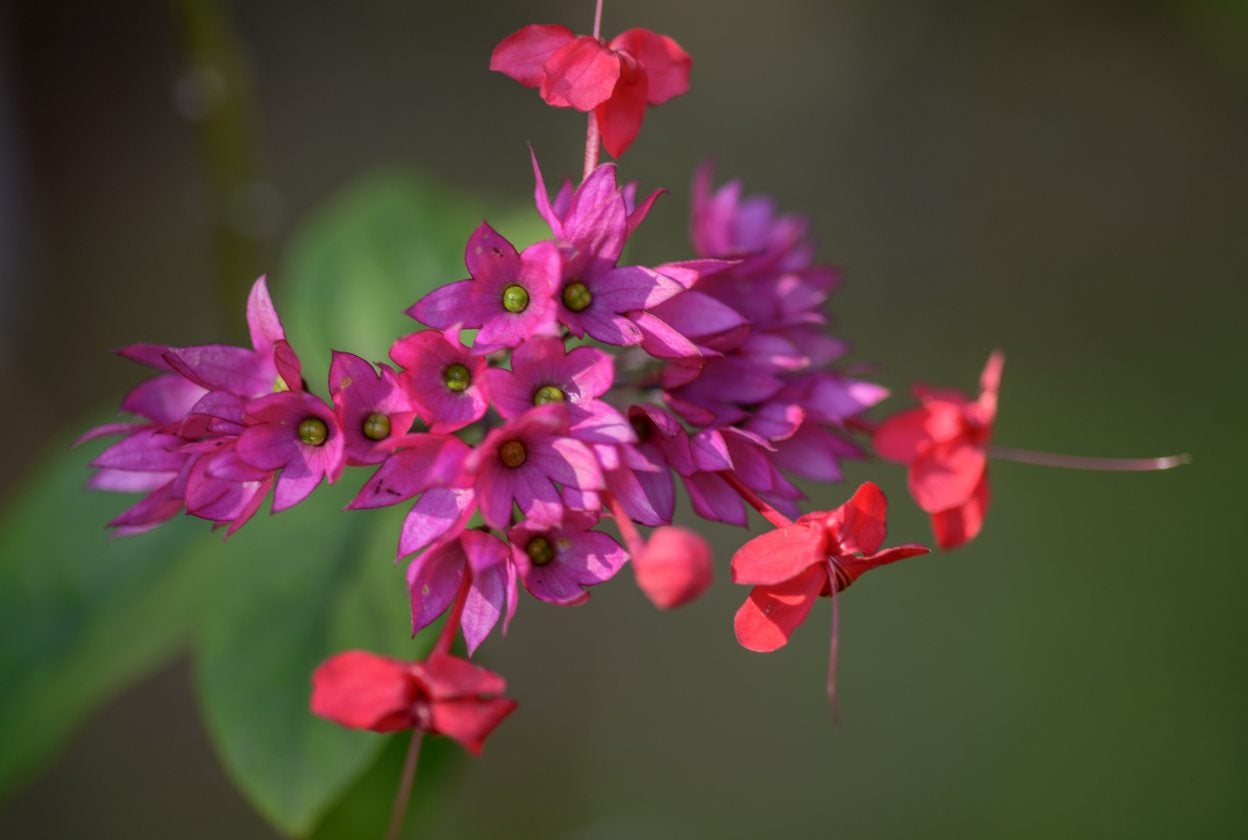Bleeding Heart Bush Vs. Vine – Recognizing Different Bleeding Heart Plants


You may have heard of bleeding heart vine and bleeding heart bush and assumed they were two versions of the same plant. But that isn’t true. These similar names were given to very different bleeding heart plants. If you want to know the ins and outs of bleeding heart bush vs. vine, read on. We’ll explain the difference between a bleeding heart bush and vine.
Are All Bleeding Hearts the Same?
The short answer is no. If you expect different bleeding heart plants to be similar, think again. In fact, bleeding heart vine and bleeding heart bush belong to different families. One difference between a bleeding heart bush and vine is that each as its own scientific name. Bleeding heart bush is called Dicentra spectablis and is a member of the Fumariaceae family. Bleeding heart vine is Clerodendron thomsoniae and is in the Verbenaceae family.
Bleeding Heart Bush vs. Vine
There is a big difference between a bleeding heart bush and vine. Let’s look at the bleeding heart bush vs. vine debate, starting with the vine. Bleeding heart vine is a slender twining vine, native to Africa. The vine is attractive to gardeners because of the clusters of bright red flowers that grow along the vine stems. The flowers initially appear to be white because of the white bracts. However, in time the crimson blossoms emerge, looking like drops of blood dripping from the heart-shaped calyx. That’s where the vine gets the common name bleeding heart vine. Since bleeding heart vine is native to tropical Africa, it is no surprise that the plant is not very cold hardy. The roots are hardy to U.S. Department of Agriculture plant hardiness zone 9, but the require protection from freezing. The bleeding heart bush is an herbaceous perennial. It can grow to 4 feet (1.2 m.) tall and 2 feet (60 cm.) wide and bears heart-shaped flowers. The outer petals of these flowers are bright reddish-pink, and form the shape of a valentine. The inner petals are white. Bleeding heart bush flowers in spring. They grow best in U.S. Department of Agriculture plant hardiness zones 3 through 9.
Sign up for the Gardening Know How newsletter today and receive a free copy of our e-book "How to Grow Delicious Tomatoes".

Teo Spengler is a master gardener and a docent at the San Francisco Botanical Garden, where she hosts public tours. She has studied horticulture and written about nature, trees, plants, and gardening for more than two decades, following a career as an attorney and legal writer. Her extended family includes some 30 houseplants and hundreds of outdoor plants, including 250 trees, which are her main passion. Spengler currently splits her life between San Francisco and the French Basque Country, though she was raised in Alaska, giving her experience of gardening in a range of climates.